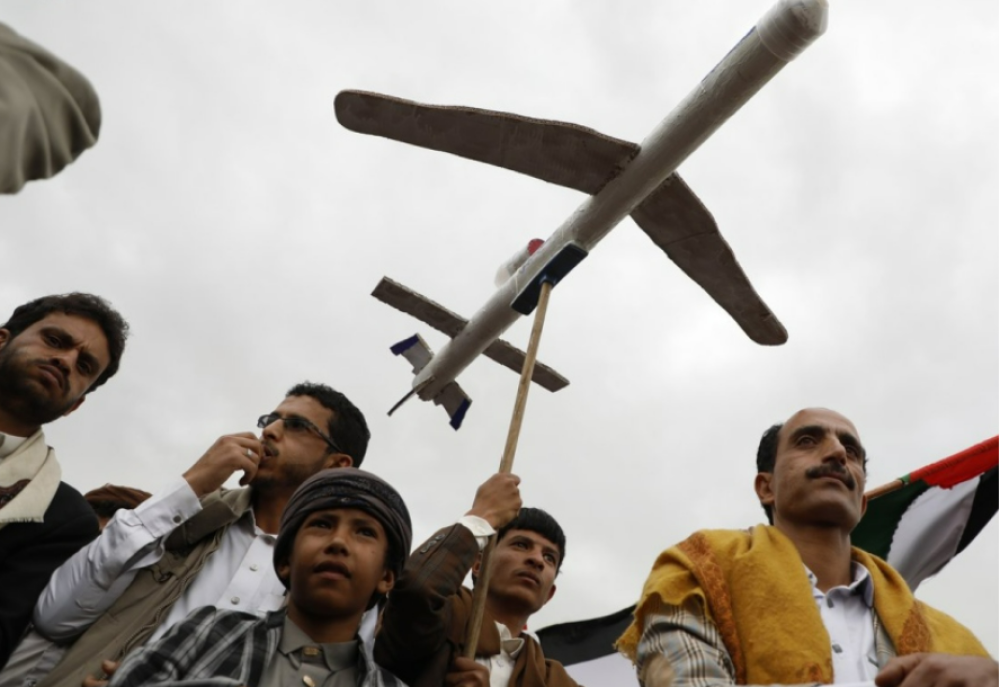Yemen : Ship attacks and downing US drones. Houthis still put up a fight despite US-led airstrikes


Despite a month of U.S.-led airstrikes, Yemen's Iran-backed Houthi rebels remain capable of launching significant attacks — just this week, they seriously damaged a ship in a crucial strait and apparently downed an American drone worth tens of millions of dollars.
The continued assaults by the Houthis on shipping through the crucial Red Sea corridor — the Bab el-Mandeb Strait — against the backdrop of Israel's war on Hamas in the Gaza Strip underscore the challenges in trying to stop the guerrilla-style attacks that have seen them hold onto Yemen's capital and much of the war-ravaged country's north since 2014.
Meanwhile, the campaign has boosted the rebels' standing in the Arab world, despite their own human rights abuses in a yearslong stalemated war with several of America's allies in the region. And the longer their attacks go on, analysts warn the greater the risk that disruptions to international shipping will begin to weigh down on the global economy.
On Monday, both the Houthis and Western officials acknowledged one of the most-serious attacks on shipping launched by the rebels. The Houthis targeted the Belize-flagged bulk carrier Rubymar with two anti-ship ballistic missiles, one of which struck the vessel, the U.S. military's Central Command said.
The Rubymar, which already had reported problems with its propulsion back in November, apparently became inoperable, forcing her crew to abandon the vessel.
Houthi military spokesman Brig. Gen. Yahya Saree claimed on Monday night that the Rubymar sank, though there was no immediate independent confirmation of that. But even if it was still afloat, the attack marked one of only a few direct, serious hits by the Houthi rebels on shipping. In late January, another direct hit by the Houthis set a Marshall Islands-flagged tanker ablaze for hours.
Meanwhile, the Houthis early on Tuesday released footage of what they described as a surface-to-air missile bringing down a U.S. MQ-9 Reaper drone off the coast of Hodeida, a Yemeni port city held by the Houthis on the Red Sea. The footage also included video of men dragging pieces of debris from the water onto a beach.
Images of the debris, which included writing in English and what appeared to be electrical equipment, appeared to correspond to known pieces of the Reaper, which can be used in both attack missions and surveillance flights. Central Command and the U.S. Air Force's Mideast arm have not responded to questions from The Associated Press over the apparent downing.
In November, the Pentagon acknowledged the loss of an MQ-9, also shot down by the rebels over the Red Sea.
Since Yemen’s Houthi rebels seized the country’s north and its capital of Sanaa in 2014, the U.S. military has lost at least four drones to shootdowns by the rebels — in 2017, 2019 and this year.
Meanwhile, the Houthis also claimed an attack on the Sea Champion, a Greek-flagged, U.S.-owned bulk carrier bound for Aden, Yemen, carrying grain from Argentina.
The Houthis separately claimed an attack on the Marshall Islands-flagged bulk carrier Navis Fortuna as well, a ship that had been broadcasting its destination as Italy with an “all Chinese” crew to avoid being targeted. Private security firm Ambrey reported that the vessel sustained minor damage in a drone attack
Since November, the rebels have repeatedly targeted ships in the Red Sea and surrounding waters over Israel’s war targeting Hamas in the Gaza Strip. They have frequently targeted vessels with tenuous or no clear links to Israel, imperiling shipping in a key route for trade among Asia, the Mideast and Europe. Those vessels have included at least one with cargo for Iran, its main benefactor.
So far, no U.S. sailor or pilot has been wounded by the Houthis since America launched its series of airstrikes targeting the rebels back in January. However, the U.S. continues to lose drones worth tens of millions of dollars and fire off million-dollar cruise missiles to counter the Houthis, who are using far-cheaper weapons that experts believe largely have been supplied by Iran to wage an asymmetrical battle on the seas.
Based off U.S. military's statements, American and allied forces have destroyed at least 73 missiles of different types before they were launched, as well as 17 drones, 13 bomb-laden drone boats and one underwater explosive drone over their monthlong campaign, according to an AP tally. Those figures don't include the initial Jan. 11 joint U.S.-U.K. strikes that began the campaign. The American military also has shot down dozens of missiles and drones already airborne as well since November.

The Arab League, the Muslim World League, and several Arab and Islamic countries have called for an immediate halt to military escalation in Yemen,…

Hargeisa -- In the first international recognition since it declared independence from Somalia in 1991, Israeli Prime Minister Benjamin Netanyahu a…

In his first Christmas address titled Urbi et Orbi, Pope Leo XIV called on the world to embrace responsibility as the surest path to achieving peac…